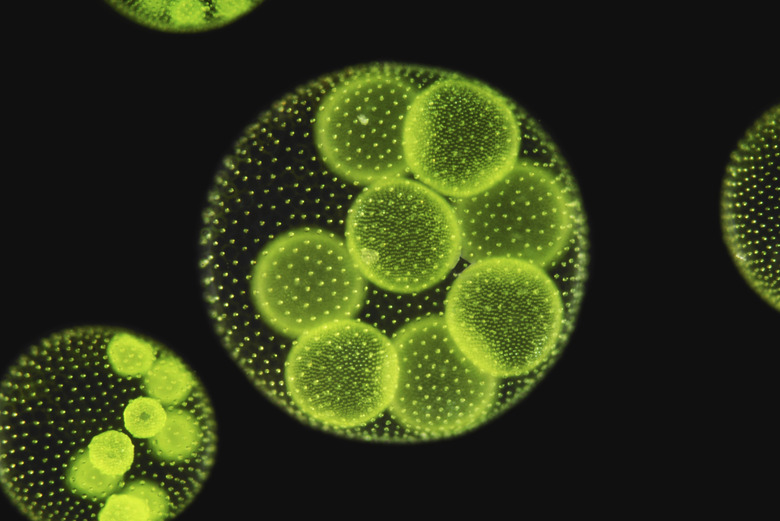Peer through a microscope at a sample of fresh water, and you might see an emerald green, floating sphere. The hollow ball is actually comprised of algae of the genus Volvox and is a colony of thousands of individual algae cells. As part of the colonial lifestyle, the cells work together to find food energy. Cells with eye spots direct the colony toward sunlight, which is then harvested and converted into sugar.
Primary Producers
Volvox is a photoautotroph, or an organism that produces its own biomass by utilizing light from the sun and inorganic materials such as carbon dioxide and minerals. Volvox algae is green because of its high concentration of chlorophyll, a pigment that absorbs sunlight. Colonies of Volvox consume the sun’s energy through the process of photosynthesis and turn it into sugar. The chemical reaction of photosynthesis is carbon dioxide plus water plus sunlight yields sugar, oxygen and water.

